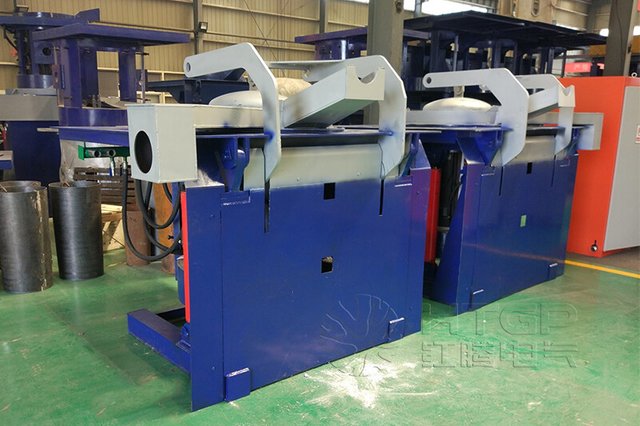What Is a Steel Induction Furnace?
A steel induction furnace is a type of electric furnace used for melting and heating steel and other metals. It utilizes electromagnetic induction to generate heat within the metal. The furnace consists of an induction coil made of copper or other conductive materials, which creates a magnetic field when an alternating current (AC) passes through it.

Steel Induction Furnace Work Process
Induction Heating
The AC power is supplied to the induction coil, creating a rapidly alternating magnetic field. When a steel object is placed within this magnetic field, the magnetic lines of force induce electrical currents, known as eddy currents, within the steel.
Eddy Current Heating
The eddy currents flow through the steel, and due to the electrical resistance of the material, they generate heat. The heat is concentrated near the surface of the steel, resulting in efficient and localized heating.
Melting or Heating
As the steel absorbs heat from the induced currents, it reaches its melting point or desired temperature for heating applications. The power supply to the induction coil is adjusted to control the heating rate and maintain the desired temperature.
Crucible or Induction Stirring
In some cases, a crucible is used within the induction furnace to contain the molten steel. The crucible can be made of ceramic or other refractory materials capable of withstanding high temperatures. Additionally, induction stirring can be employed to enhance the mixing of the molten metal.
Advantages of Steel Induction Furnace
Energy Efficiency
Induction heating is highly efficient due to the localized heating, resulting in minimal heat loss.
Precise Temperature Control
The power supply to the induction coil can be precisely controlled, allowing accurate temperature management.
Fast Heating
Induction furnaces can achieve rapid heating rates, reducing overall processing time.
Clean and Environmentally Friendly
Since induction furnaces use electricity as the power source, they produce minimal emissions and have a smaller environmental footprint compared to other heating methods.
Applications of Steel Induction Furnace
Steel induction furnaces are commonly used in foundries, metalworking industries, and steel production facilities for various applications, including melting scrap metal, alloying, casting, and heat treatment processes.
In a steel plant, a steel induction furnace is typically applied for various processes involving steel production and processing. Here are some common applications of steel induction furnaces in steel plants:
Melting Scrap Metal
Induction furnaces are widely used for melting scrap steel or other metal alloys. Scrap metal, such as steel turnings, chips, or recycled steel, can be melted in the furnace to produce molten metal for further processing.
Alloying
Induction furnaces are utilized for alloying processes where different metals or elements are added to the molten steel to achieve specific properties. Alloying elements, such as chromium, nickel, manganese, or vanadium, can be introduced into the molten steel within the induction furnace to create desired steel grades or alloys.
Casting
Once the steel is melted and alloyed, the molten metal can be poured into molds or castings to produce various steel products. Induction furnaces provide a controlled and efficient method for maintaining the molten steel at the desired temperature during the casting process.
Heat Treatment
Induction furnaces can be employed for heat treatment processes in steel plants. Heat treatment involves subjecting the steel to specific temperatures and cooling rates to modify its mechanical properties. The induction furnace provides precise and localized heating, making it suitable for processes such as annealing, hardening, tempering, or case hardening.
Steel Refining
In some steel plants, induction furnaces are used for refining processes. The molten steel can be subjected to additional treatments within the furnace, such as desulfurization, dephosphorization, or deoxidation, to improve the steel's quality and remove impurities.
Ladle Preheating
Induction furnaces can also be used for preheating ladles or other containers used for transporting molten steel. Preheating the ladles helps maintain the desired temperature and prevents premature cooling or solidification of the molten steel during the transfer process.
Overall
Steel induction furnaces play a crucial role in steel plants by providing efficient and controlled heating for melting, alloying, casting, heat treatment, and refining processes. They contribute to the production of high-quality steel products with specific properties tailored to various industrial applications.